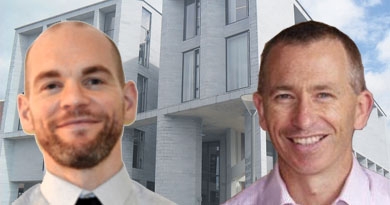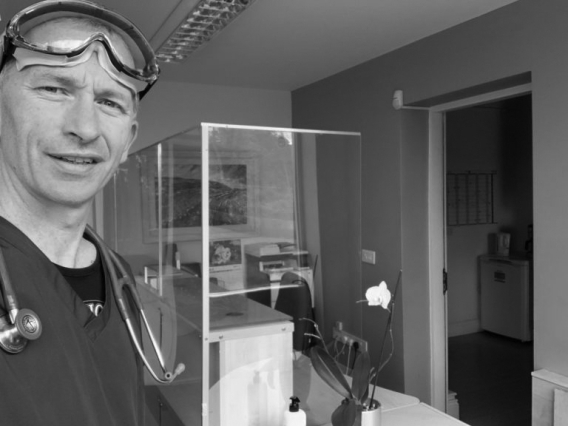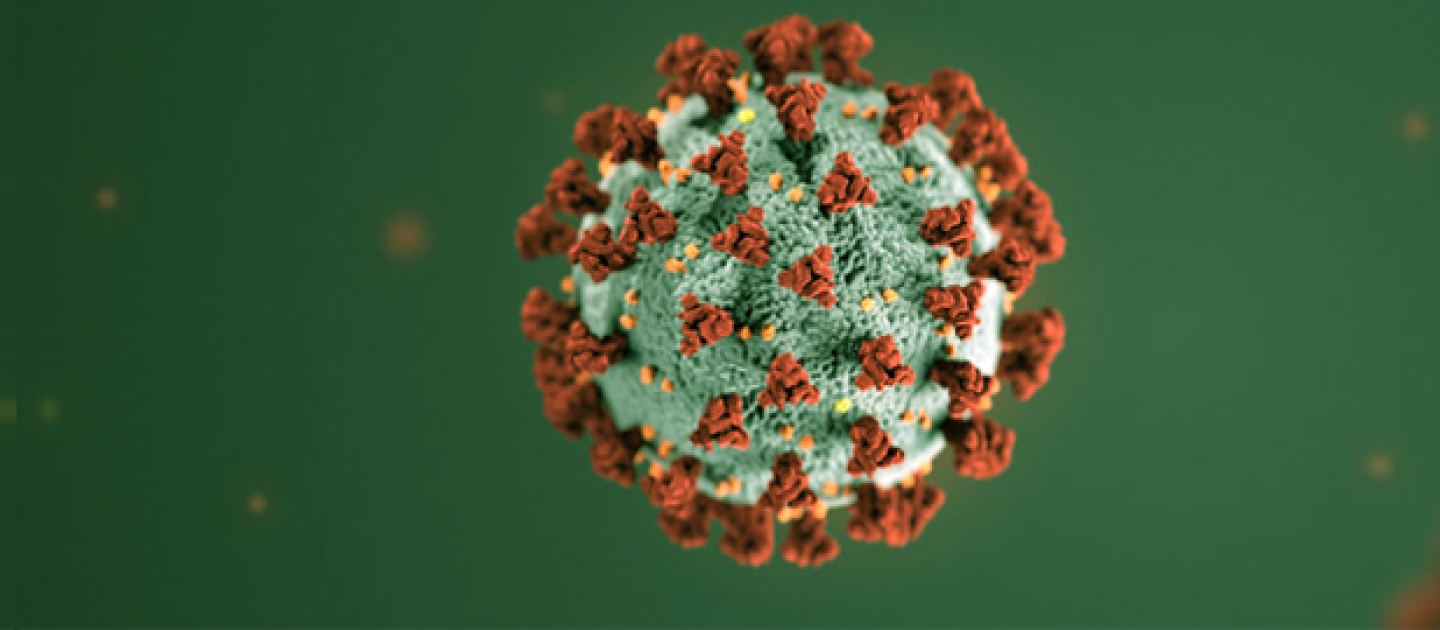Since a novel coronavirus first surfaced in the city of Wuhan, China in December 2019, every country and region is struggling to learn how best to react to this unprecedented healthcare emergency.
All countries are trying to mount an effective public health response to the virus that minimises the harmful effects of the virus on the health of our populations and the economies of our regions and countries, while trying to protect existing healthcare delivery.
Very early in the outbreak here in Ireland, UL academics Professor Liam Glynn and Dr Mike O’Callaghan, who are also frontline clinicians working in General Practice sought to contribute to the public health response with the founding of #COVIDWATCHIRL and more recently #COVIDWATCHEU on Twitter and the web. Throughout this crisis, they have continued to deliver care to their practice populations in Ballyvaughan Co Clare and Bruff, Co Limerick, respectively, during what they both agree has been the most challenging time of their clinical careers.
What is it like to work as GPs in rural Ireland?
On one hand it is a very beautiful environment to work in and there is a very strong sense of community, but it is also very challenging to deliver healthcare to dispersed populations with high levels of deprivation, many of whom are elderly and vulnerable with complex healthcare needs.

How did COVID-19 change your daily medical practice?
COVID-19 changed a lot of things. In the initial phase of the pandemic, we had to move over 90% of our patient contacts to phone/video consultations. We had to dramatically reduce the number of face-to-face contacts to limit risks of transmission of the virus. When we did see our patients, instead of shaking their hands and being able to smile and welcome them, we were wearing masks and in some cases full personal protective equipment (PPE).
General practitioners with the HSE have also been involved in setting up and manning 40 COVID-19 Community Assessment Hubs or “Hot hubs” across the country where we see people who are COVID-19 positive or presumed positive and who are deteriorating in the community, and we decide if they need to go to hospital or if they can continue to be managed at home.
These additional safeguards persist in everyday practice and while necessary, hinder our interactions with patients somewhat. An additional challenge is the backlog of routine care that built up during the previous lockdown while managing new COVID related care.
So how did the #COVIDWATCHIRL journey start?
We initially raised the question on whether the Irish trajectory in this pandemic would follow that of Bergamo (northern Italy) or Busan (South Korea). At the time we called for the following key steps to be implemented at scale and effectively in Ireland:
1. An aggressive, transparent and ongoing information campaign to the general public to convey the importance of social distancing and social isolation and thus help to slow the progression of this disease outbreak;
2. Redeployment of healthcare staff and other civil service staff where possible to public health roles such as triage, contact tracing and testing;
3. High volume community based testing, with rapid result communication to better target outbreak clusters;
4. Effective quarantine of infected individuals either at home or in hospital;
These measures still form the fundamental basis of the response to COVID-19 internationally, as we await a vaccine.
You have been reporting on the Irish and international cases and deaths of COVID-19 on a Twitter campaign, using #COVIDWATCHIRL. Where was the thinking behind this initiative?
People are hungry for good data. They want to know what is going on and that the extraordinary sacrifices they are making in terms of COVID-19 is having a positive effect for themselves, their families and for their communities. We are also aware that we are asking people to do incredibly difficult things in terms of social and physical distancing.
So our first purpose was to report fact, not fiction, using reputable open data sources. We wanted to give people clear data about what was going on in Ireland, but also to do some inter-country comparisons so that people would know how we are doing compared to other countries.
And finally, we wanted to try and drive that social change agenda that we feel is so important, because the battle is going to be won and lost in the community and with the actions of each and every individual.
We felt this work was particularly important due to the fact we share the island with Northern Ireland and also because we knew we have low relative numbers of ICU and critical care beds compared to other countries.
What sort of activities has this entailed?
We published daily comparative data for the first 100 days of the pandemic and then as cases thankfully began to fall we began to publish data weekly. The focus of this endeavour has been to attempt to drive the behavioural change required of our campus community and country to combat COVID-19. We hoped that #COVIDWATCHIRL could contribute to driving that behavioural change process in a positive way and ultimately save lives.
While generally the messaging that accompanies our graphs has largely mirrored that of the HSE, we felt there were times where certain elements of the response needed additional attention.
We felt widespread mask-wearing was an important aspect to the public health response in other jurisdictions and we are pleased to see how masks have been widely adopted in Ireland.
The UL website has served as a useful repository for relevant information and the various aspects of the #COVIDWATCHIRL campaign we’ve worked on and we’d like to thank the Marketing and Communications Division of University of Limerick for their support.
What sort of a response has this had?
There has been an enormous amount of positive feedback from the campus community and the wider community to this work. In addition, the project has gained a national following with an average of 40,000 impressions on twitter daily for the first 100 days of the pandemic. It has also involved numerous media engagements for the team such as Morning Ireland and Drive time on Radio 1, the RTE Six One News, Primetime, TV3 Tonight Show and a regular weekly slot on Newstalk Breakfast as well as regional radio such as Limerick’s own LIVE95 FM, Clare FM and Galway Bay FM. Trying to translate and interpret the data for a lay audience and the media has been a big challenge but a key component of the campaign.

Any other outcomes related to the project?
We feel the work has been of benefit in terms of guidance, support and reassurance for members of the campus community and wider community in many different ways. At the same time the team has managed to contribute to several academic publications on the COVID-19 pandemic in Ireland, including a very timely article just published entitled:
“The COVID-19 pandemic in Ireland: An overview of the health service and economic policy response”.
In addition, Professor Liam Glynn was also appointed clinical lead of the Northern Periphery and Arctic (NPA) COVID-19 Response Group and the team has now been funded by the European Union to internationalise the #COVIDWATCHIRL project across a series of Northern European countries. This project will build on the lessons learned in the #COVIDWATCHIRL project and will culminate in the launch of a public-facing website where lessons learned from the participating countries can be explored by the general public.
The team also successfully applied for research funding under the COVID-19 Rapid Response umbrella. This has involved collaborating on two SFI-funded projects:
Firstly, the “COVIGILANT” project focusses on the topic of contact tracing apps led by Dr Jim Buckley from University of Limerick with colleagues from Lero and NUI Galway. Dr Mike O Callaghan is a theme lead and has recently published the results of an online survey taken by over 8,000 participants in May 2020 examining the general public’s views on the potential for a COVID contact tracing app.
Secondly, having worked in, and contributed to the organisation of the Shannon COVID-19 Community Assessment Hub with Clare GP Dr Marese Mannion and Margaret Costello of the HSE, Professor Glynn is now collaborating on another SFI-funded project led by Professor Ailish McAuliffe from UCD on the role and function of these hubs during the first wave of the pandemic.
Finally, the team has also carried out the first seroprevalence study of COVID-19 antibodies in the community in the Mid-West, the results of which are eagerly awaited. This involved 15 General Practice sites across Limerick, Clare and Tipperary and involved nearly 1000 patients and healthcare staff in the community.
As we move into this second phase of the pandemic, it is becoming clear that we need to co-exist with this virus for the foreseeable future. That realisation brings with it new challenges, although the basics of our national approach will need to remain the same. Simple kindness and compassion for our fellow citizens will help us collectively endure the ups and downs of the road ahead. Spending time on self care, outside interests and hobbies will be important if we are to pace ourselves for the marathon ahead. While the challenges for education and healthcare delivery abound, we are an adaptable species and can be proud of the quick pace of change we have managed to implement in the past 6 months. And through science, respectful debate and public health measures, we will endure the next 6 months and beyond as best we can.
- Andrew Carey
